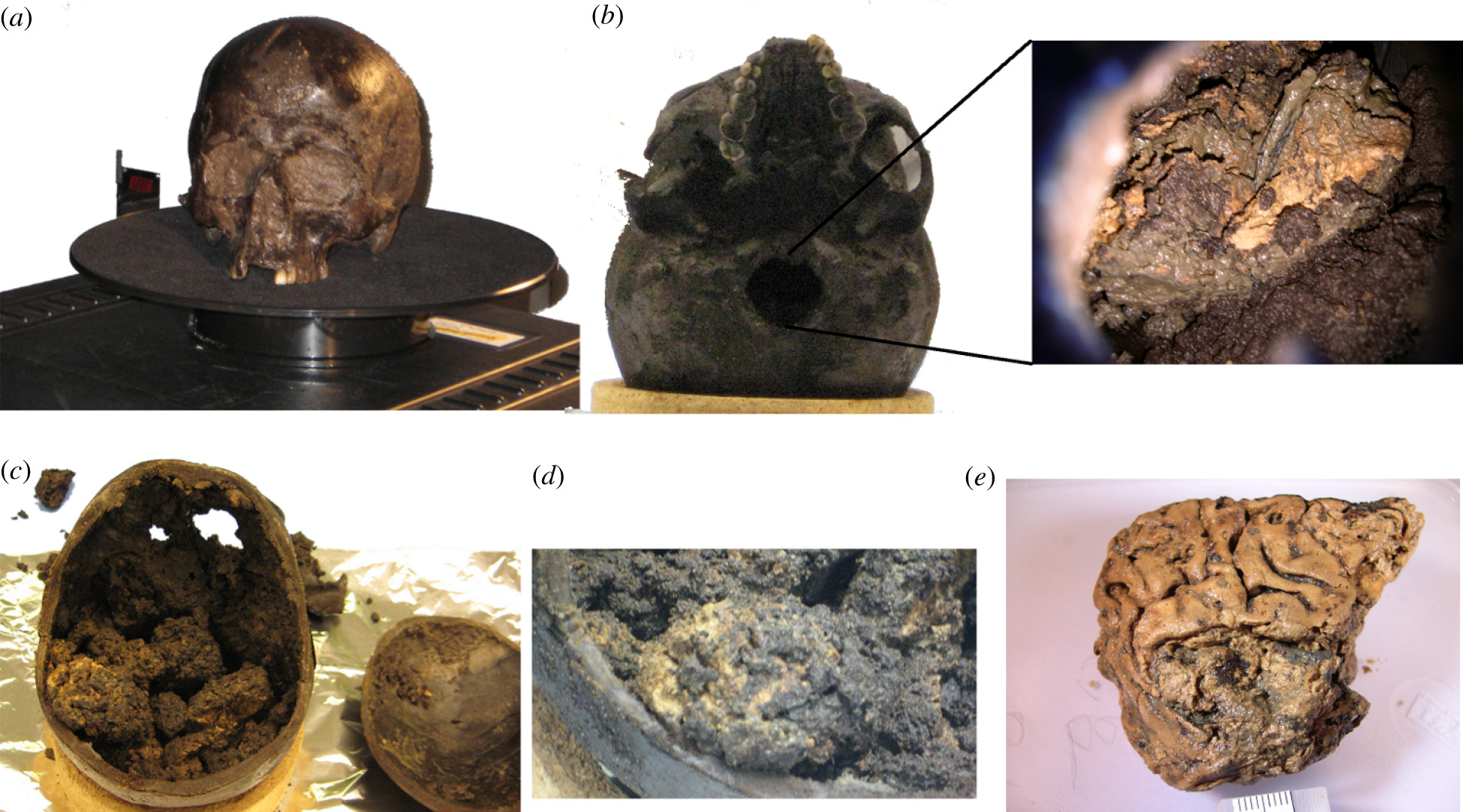Some time between the years of 673 and 482 BCE, a man was killed in northern England near the modern town of Heslington. His head was severed from his body and tossed into a pit, and any trace of his existence was lost for thousands of years.
Then, in 2008, archeologists unearthed the man’s skull and were stunned to find that his brain had been preserved in incredible detail. The unusually intact condition of the so-called Heslington Brain has puzzled researchers for more than a decade, because neural tissue normally disintegrates rapidly after death. The Heslington Brain turned this pattern on its head because it was the only tissue matter in the skull that did not decompose.
To probe the mystery of the brain’s survival, researchers led by Axel Petzold, a neurologist at University College London, spent a year examining tissue samples using a variety of molecular techniques.
The results, published on Wednesday in the Journal of the Royal Society Interface, suggest that special proteins in the brain were spared from the putrefying effects of enzymes, enabling them to form strong aggregates that withstood decay. The research not only sheds light on the properties of this ancient organ, but also has applications for modern neuroscience and archeology.
“The preservation of human brain proteins at ambient temperature should not be possible for millennia in free nature,” said Petzold’s team in the study. Therefore, the “yellowish-brown mass” of the Heslington Brain “offers a unique opportunity to use molecular tools to investigate the preservation of human brain proteins,” they added.

While the Heslington specimen is not the only example of exceptional brain preservation in the archeological record, it is notable because there was “no sign of hair, skin, or any other soft tissue” other than the neural tissue, the team said.
To pinpoint what may have been different about this brain’s afterlife, Petzold and his colleagues watched tissues sourced from both the ancient specimen and a modern brain as they decomposed over an entire year. The team also analyzed samples with precision techniques such as mass spectrometry and observed the behavior of antibodies generated from the ancient brain cells.
The experiments isolated intermediate filaments, a type of neural connective structure, as a key source of stability in the Heslington Brain. While brain tissues are normally broken down by enzymes called proteases after death, these filaments in the ancient brain remained resistant to their effects. Instead, the filaments formed strong protein aggregates that contributed to the organ’s overall structural integrity and preservation.
It’s still not clear why the filaments toughed it out, but the researchers speculated that some type of preservative compound might have leaked into the skull from the sediment at the burial site.
“Combined, the data suggest that the proteases of the ancient brain might have been inhibited by an unknown compound which had diffused from the outside of the brain to the deeper structures,” the team said in the study.
The results have implications for unraveling the mechanisms behind neurodegenerative conditions related to aggregate formation, such as Alzheimer’s disease or Creutzfeldt-Jakob disease.
So while this man’s last thoughts were probably bleak, given that experts suspect he was the victim of an execution or a ritual murder, his brain may help people live healthier lives some 2,500 years after his own death.
from VICE https://ift.tt/37LBZ7a
via cheap web hosting
No comments:
Post a Comment